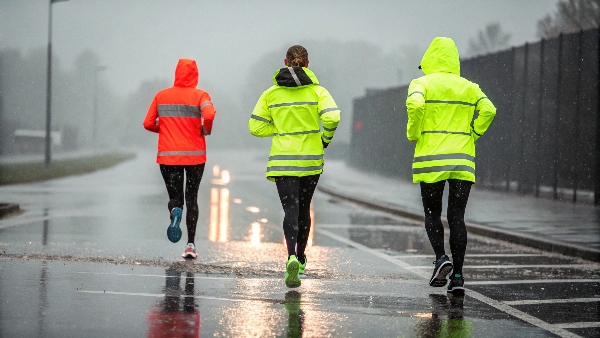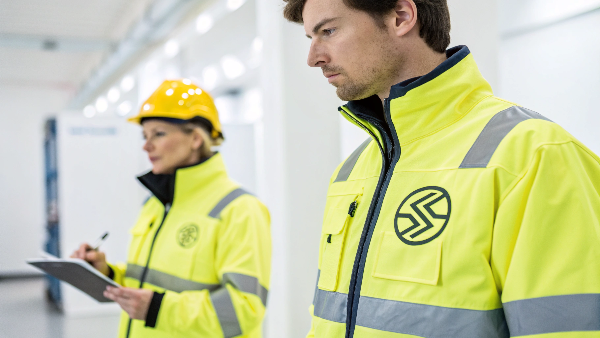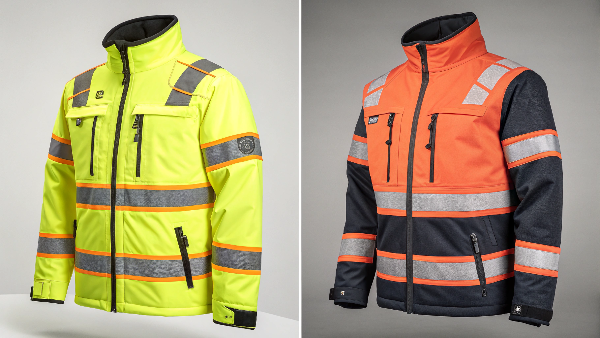Is a guard's vest just part of the uniform? Or is there more to it? Many wonder about its real job.
Security guards wear vests primarily for high visibility. This ensures they are easily seen by the public and colleagues, enhancing safety and serving as a clear identifier of authority.
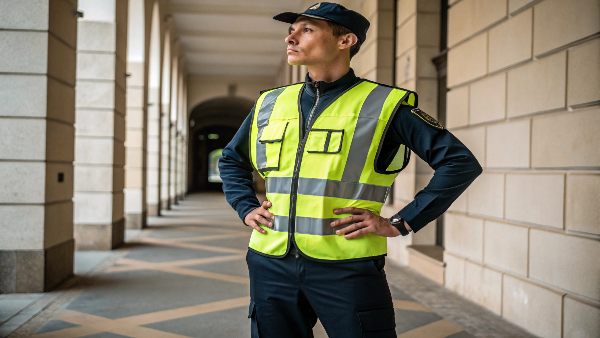
You might see security guards in many places. They often wear special vests. These vests are not just for show. They have important jobs. They help keep the guard safe and let others know who they are. We at Vissafety understand this well. We have been making high-visibility clothing since 2007. Our goal is to provide top-quality gear. This gear helps our clients' businesses worldwide. Let's look closer at why these vests are so important.
Why do security guards wear vests?
Ever felt unsure who to ask for help in a crowd? Or worried about workers near traffic? Vests solve this.
Security guards wear vests to be easily seen, which is crucial for safety in busy or hazardous areas. The vest also clearly marks them as security personnel, helping maintain order.
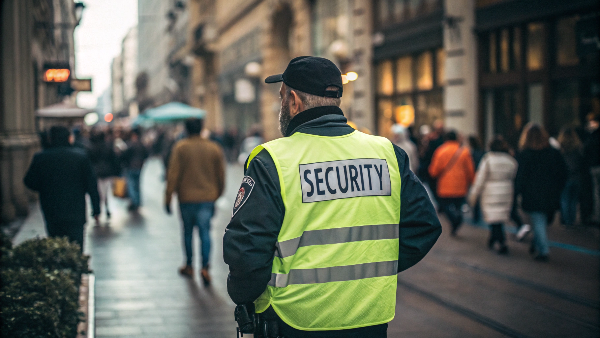
The main reason is visibility. Think about a security guard at a big outdoor event. Or one patrolling a large construction site at dusk. It is very important for them to stand out. High-visibility vests, often in bright fluorescent colors like yellow or orange with reflective stripes, make sure they are seen. This is true during the day and even more so at night or in bad weather. I remember talking to Danny Cheng, one of our long-term clients from California. He imports PPE for the construction and logistics sectors. He always stresses how critical ANSI/ISEA 107 compliant vests1 are for his customers. He says, "If my guys can't be seen, they can't be safe." This visibility prevents accidents. It allows drivers or machinery operators to spot guards from a distance. It also helps the public and other staff members quickly find a guard if they need help. The vest acts like a beacon. It says, "I am here, and I am in charge of security." This instant recognition can stop potential problems before they start. At Vissafety, we produce millions of these vests, ensuring they meet global standards.
What is the purpose of wearing a safety vest?
Are you working where it's hard to see people? This can be very dangerous. A simple vest can make a big difference.
The main purpose of a safety vest is to make the wearer highly visible. This helps prevent accidents by ensuring others can see them, especially in low light or busy environments.
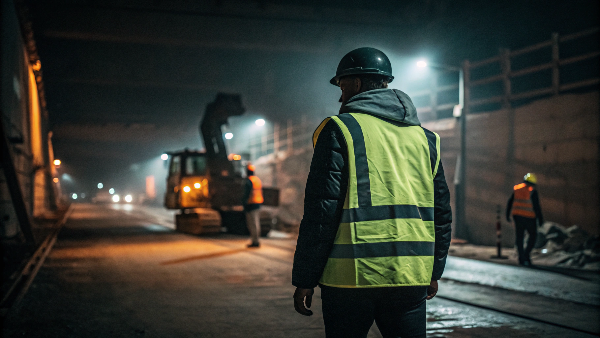
A safety vest is all about being seen to stay safe. This is its core job. High visibility clothing, like the vests we make at Vissafety, is designed to make the wearer stand out from their background. This is super important for people working outdoors or in complex environments. For example, road construction crews, airport ground staff, and warehouse workers all face risks from moving vehicles or machinery. Our vests use fluorescent materials for daytime visibility. They also have retroreflective tapes2 that shine brightly when light hits them at night. This makes the wearer noticeable from far away, giving drivers or operators more time to react. We ensure our products, like safety vests, jackets, and trousers, comply with standards like EN ISO 20471 in Europe and ANSI/ISEA 107 in the US. These standards specify the amount of fluorescent material and reflective tape needed for different risk levels. It's not just about color; it's about performance. The purpose is simple: to save lives and prevent injuries by making people unmissable. My team and I believe safety brings peace of mind to workers and their families.
Why do security guards wear black clothes?
Ever wondered why some security choose dark colors? It seems opposite to being visible. There are reasons for this choice.
Some security guards wear black for a professional, authoritative look. Black can also offer a tactical advantage3 in certain situations by making the guard less conspicuous, especially at night.
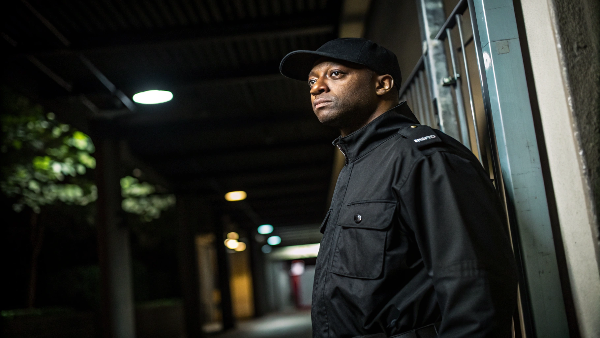
Black clothing for security guards often connects to tradition and psychology. Black can project an image of authority, seriousness, and professionalism. It's a color often associated with law enforcement and formal roles, which can command respect. For certain security roles, like those at night clubs, special events, or in personal protection, being less visible can be an advantage. It might allow them to observe without drawing too much attention to themselves. However, this changes when high visibility is the top priority for safety. In many modern settings, especially where there's traffic or heavy machinery, a security guard might wear a black uniform underneath a bright, high-visibility safety vest4. This way, they get the best of both worlds. They have the formal look of the black uniform but also the crucial safety benefit of the vest. At Vissafety, we offer customization. So, a company can have their black uniforms and then order high-visibility vests from us that complement their brand, perhaps with their logo. This balance ensures both a professional image and paramount safety. It's about choosing the right tool for the specific security job.
What is the point of wearing vest?
Is a vest just an extra layer? Or does it serve a more specific function depending on its type? It really depends.
The point of wearing a vest varies by type. Safety vests enhance visibility, while other vests can offer protection, carry tools, or provide warmth, all without restricting arm movement.
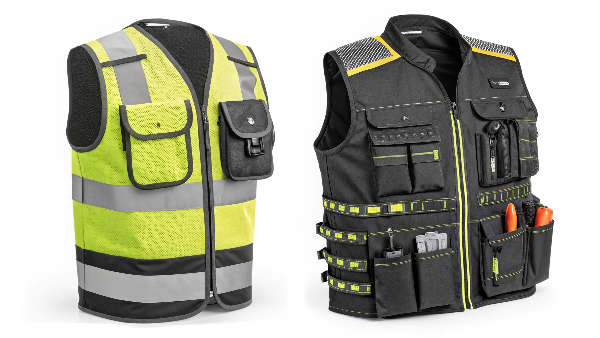
Vests are a very versatile piece of clothing. Their "point" really depends on what kind of vest it is. For us at Vissafety, our main focus is on high-visibility safety vests4. The point here is clear: to make the wearer stand out and prevent accidents. These are essential for many industries. But there are other types of vests too. For example, some security guards or law enforcement officers wear bulletproof or stab-resistant vests5. The point of these is physical protection. Other professionals, like photographers or fishermen, wear utility vests6 with many pockets. The point here is to carry tools and equipment easily, keeping their hands free. Then there are insulated vests, designed to provide core warmth without the bulk of a full jacket, allowing for better arm movement. Even in the world of safety vests, there can be variations. Some of our clients ask for vests with extra pockets for radios or ID badges, or specific features like breakaway designs for safety around machinery. So, the point of a vest can be visibility, protection, utility, or warmth. It’s a practical garment that can be tailored to many needs.
Who is required to wear a safety vest?
Do you know if your job needs a safety vest? Many regulations exist to protect workers. It is important to know them.
Many workers in hazardous environments are required to wear safety vests. This includes construction workers, road crews, emergency responders, airport personnel, and often event staff or security in specific areas.
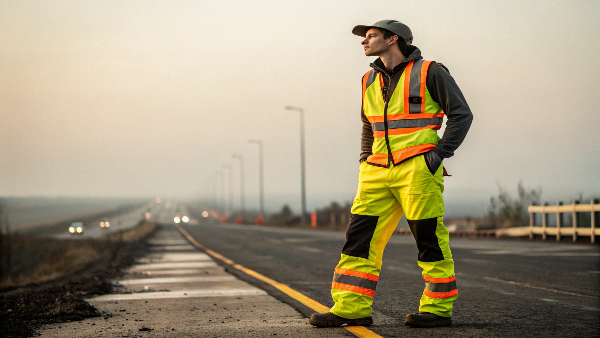
Many jobs require people to wear safety vests by law or company policy. This is all about worker safety. In the US, OSHA (Occupational Safety and Health Administration) has rules. These rules often mean workers exposed to vehicle traffic or construction equipment must wear high-visibility clothing. This includes road construction crews, utility workers, and surveyors. Similarly, in Europe and other regions, there are standards like EN ISO 20471 that define when high-visibility clothing is needed.
Here's a quick look at some common roles:
| Industry/Role | Reason for Safety Vest Requirement | Common Vest Standard Met by Vissafety |
|---|---|---|
| Construction Workers | Exposure to moving vehicles and equipment | ANSI/ISEA 107, EN ISO 20471 |
| Road Maintenance Crews | Working near live traffic | ANSI/ISEA 107, EN ISO 20471 |
| Airport Ground Personnel | Working around aircraft and service vehicles | ANSI/ISEA 107, EN ISO 20471 |
| Emergency Responders | Visibility at accident scenes, often in low light | ANSI/ISEA 107, EN ISO 20471 |
| Warehouse/Logistics Staff | Working around forklifts and loading docks | ANSI/ISEA 107, EN ISO 20471 |
| Event Staff & Security | Easy identification and visibility in crowds/traffic | Often customized, can meet ANSI/ISEA |
| School Crossing Guards | Protecting children in traffic | ANSI/ISEA 107 |
As a B2B manufacturer, Vissafety supplies these vests in bulk to large corporate buyers, brands, and distributors. We ensure our products meet these strict global standards. For example, Danny Cheng relies on us to provide compliant vests for his clients in North America. It's about protecting people in these demanding jobs.
What was the original purpose of a vest?
Have vests always been about safety? Or did they start differently? Their history is quite interesting, actually.
Originally, vests, or waistcoats, were fashionable garments for men, introduced in the 17th century. Modern safety vests evolved much later, driven by the need for worker visibility and protection.
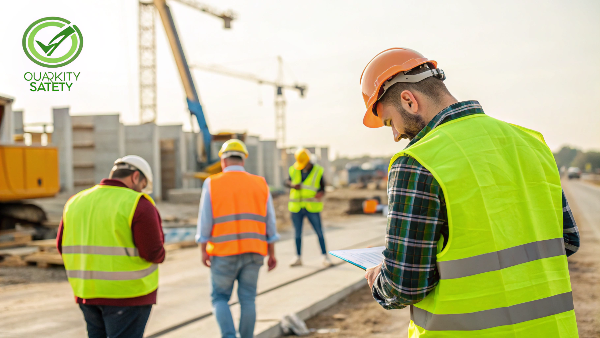
The vest we know today, as a sleeveless garment, has a long history. Originally, it was more about fashion and status than safety. King Charles II of England is often credited with introducing the waistcoat to Western fashion in the 17th century. It was a formal piece of clothing, worn under a coat, often made of rich fabrics. This was very different from the safety vests we think of now. The idea of a safety vest is much more modern. It came about with the rise of industrial work and increased traffic in the 20th century. People realized that workers in dangerous environments, like railway workers or construction crews, needed to be more visible to prevent accidents. The first high-visibility garments were simple. But over time, with new materials like fluorescent fabrics and reflective tapes, they became much more effective. The focus shifted from fashion to pure function: saving lives. At Vissafety, our focus is on this modern purpose. We use advanced materials and designs to make sure our vests offer the best possible visibility, following standards developed from decades of safety research. So, while the vest started as a style item, its most critical role today for many is protection.
What are the rules for wearing a vest?
Just putting on a vest isn't always enough. Are there specific ways to wear it for it to work best? Yes, there are.
Rules for wearing a safety vest include ensuring it's the correct class for the job, fits properly, is clean, worn as the outermost garment, and is in good condition.

Yes, there are definitely rules and best practices for wearing a safety vest to make sure it does its job. It's not just about having one; it's about using it correctly. First, the vest must be appropriate for the risk level of the work environment. Standards like ANSI/ISEA 107 define different classes of garments based on the amount of visible material. A worker on a high-speed highway needs a higher class vest than someone in a warehouse with slower vehicle traffic. Second, it must be worn correctly. This means it should be the outermost garment. Don't wear it under a jacket, because that covers the reflective and fluorescent materials. It should also be fastened properly. If it's flapping open, it might not provide full visibility and could get caught on machinery. Third, the vest needs to be kept clean and in good condition. Dirt and wear can reduce the brightness of the fluorescent material and the reflectivity of the tapes. If a vest is faded, torn, or dirty, it should be replaced. As a manufacturer, we at Vissafety advise our clients on these aspects. We ensure our vests are durable, but proper care and timely replacement are key for ongoing safety. Employers are usually responsible for ensuring their workers have and use the right vests correctly.
What do the colors of safety vests mean?
Do different vest colors mean different things? Sometimes they do, especially for quick identification on a busy site.
Fluorescent yellow-green and orange-red are standard high-visibility colors for safety. Other colors like blue or black might denote specific roles (e.g., visitor, foreman) but offer less visibility.

The colors of safety vests are very important, mainly for visibility. The most common and effective colors for high visibility are fluorescent yellow-green, fluorescent orange-red, and sometimes fluorescent red. These colors are chosen because they are very bright and contrast well with most backgrounds, making the wearer stand out, especially in daylight and twilight.
At night, it's the reflective tapes that do most of the work by bouncing light back to its source, like car headlights.
Sometimes, different colors can be used to differentiate roles on a worksite, though this is secondary to the main goal of visibility. Here's a general idea, but it can vary by company or region:
| Vest Color | Common Association / Primary Use | Visibility Level | Notes |
|---|---|---|---|
| Fluorescent Yellow/Green7 | General safety, high visibility in most conditions | Excellent | Most common, good contrast against many environments. |
| Fluorescent Orange/Red | General safety, high visibility, often preferred in snowy areas | Excellent | Good contrast against foliage and sky. |
| Blue | Often for specific roles like site visitors, technical staff, or foremen | Lower | Not a standard high-visibility color for ANSI/EN ISO compliance. |
| Black | Sometimes for supervisors, security, or specific non-HV roles | Very Low | Used for authority or when high visibility isn't the prime concern. |
| Pink | Sometimes for specific events or to identify certain teams | Moderate/Low | Can be fluorescent for better visibility than standard pink. |
| Green (non-fluorescent) | Often for volunteers or specific environmental roles | Low | Less visible than fluorescent counterparts. |
It's crucial that if a vest is meant for safety in low-light or near traffic, it should be one of the approved high-visibility fluorescent colors (yellow-green, orange-red) and meet standards like ANSI/ISEA 107 or EN ISO 20471. At Vissafety, we offer a range of standard high-visibility colors and can also customize for specific client needs, always emphasizing compliance for safety-critical applications. Our client Danny Cheng, for instance, mostly orders ANSI-compliant fluorescent yellow and orange vests8 for his North American customers.
Conclusion
Security guard vests are vital for safety. They ensure guards are visible, identifiable, and thus better protected while performing their duties effectively.
-
Explore this link to understand the significance of ANSI/ISEA 107 compliant vests in ensuring safety and visibility for workers. ↩
-
Discover how reflective tapes work to enhance safety for workers in low light, making them visible to drivers and machinery operators. ↩
-
Learn about the tactical advantages of black clothing for security guards, especially in low-light situations. ↩
-
Explore this link to understand how high-visibility safety vests enhance safety in various industries, preventing accidents effectively. ↩ ↩
-
Learn about the technology behind bulletproof vests and their critical role in protecting law enforcement and security personnel. ↩
-
Discover the versatility of utility vests, designed for professionals to carry tools efficiently while keeping their hands free. ↩
-
Understanding the significance of Fluorescent Yellow/Green can enhance safety awareness on worksites. Explore more to ensure compliance and safety. ↩
-
Learn about ANSI compliance for safety vests to ensure your worksite meets safety standards and regulations. ↩

